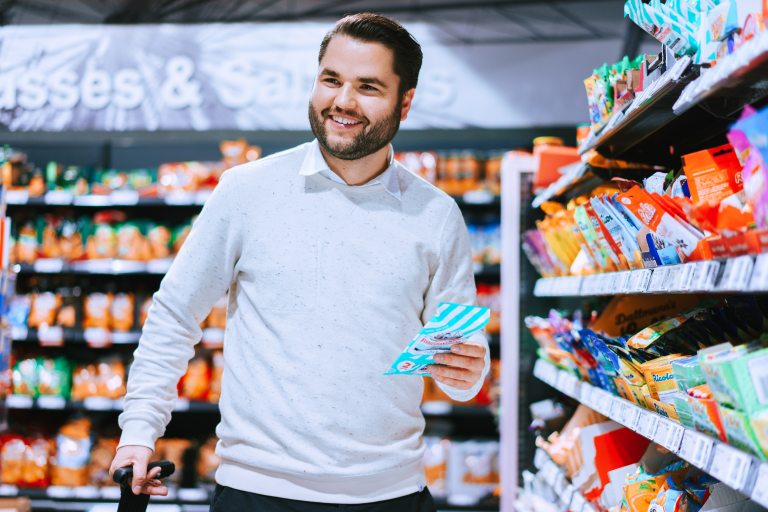SWEETS MERCHANDISING CONSULTING
Candies, chewing gum, fruit gums, lollipops or marshmallows – almost no product group is as diversified as sweets. Nearly everyone loves these delicious treats. Around 93 per cent of all German households in 2015 bought at least one sweets product. At an average of 18 purchases a year per household, that totals almost 670 million purchases.
Sweets therefore mean one thing above all others for supermarkets: sales. According to Information Resources, Germans spent 2.3 billion euros on them last year. Our graphic shows what a shopper-oriented confectionery shelf should look like in a supermarket.

OUR PLACEMENT TIPS
- Place sweets in the first third of the shop and on the customer path
Sweets are an impulse buy. See it, buy it. This is why this product group should be placed in a clearly visible spot in-store. - Place this product group all in one
Do not break up the product groups, e.g. around a corner If the product group cannot be placed together, then use e.g. gondola end bays - Consider shopper behaviour
Shoppers expect sweets to be on the confectionery shelf They first look for segments like chewy, cough or fruity sweets and then for brands. - Place subcategories in blocks
Clearly structure sweets, chewing gum, lollipops and fruit gums in single blocks.

 Deutsch
Deutsch
 English
English
